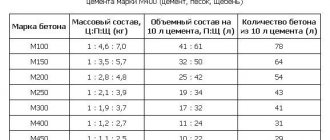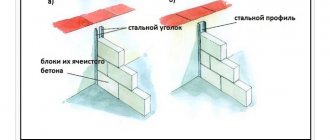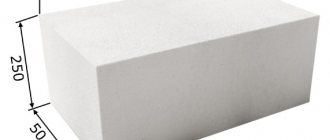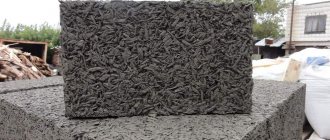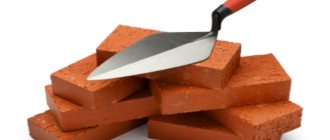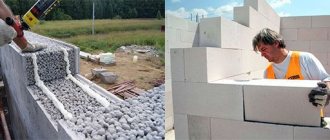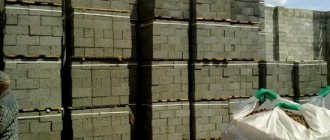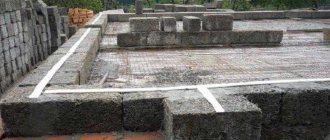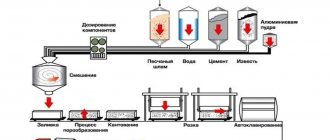Insulation is a material on which the microclimate in any room depends. Thermal insulation not only saves you from the cold, but also protects you from the summer heat, making the air in your home cooler. Due to its widespread use, many types of insulation materials have appeared. In construction stores you can find thermal insulation of various forms: in the form of rolls, granules, powders and slabs. But first of all, it is not the shape that matters, but the composition and properties of a particular insulation. According to these criteria, thermal insulation is divided into several types.
The need for insulation
It is best to insulate walls made of wood concrete from the outside. In this case, it will be possible to move the dew point. It will not be in the wall, but directly in the thermal insulation layer itself. Thanks to this, the indoor climate will remain dry and warm. In the absence of insulation, the dew point will remain inside the house itself. The wall will be covered with evaporation and freeze. In cold weather, you can find ice in the corners.
Wood concrete must be insulated, because such a wall will be blown through. There will be passages in the masonry through which cold air can penetrate into the room. Window lintels and armored belts require additional attention. An arbolite facade is not enough to withstand weather conditions. When choosing insulation, you should take into account the vapor transmission of the material. Thanks to this, it will be possible to create an optimal microclimate at any time of the year.
Wood concrete production
Often, the production of arbolite occurs directly at sawmills, for which arbolite is not the main direction of their activity and they do not have the necessary equipment for its production according to state standards; it also happens that in order to increase the profitability of enterprises, in addition to wood chips, other materials are added to it, which does not increase it quality.
Sugars contained in wood chips and wood filler prevent good adhesion of the binder component, cement. The solution to this problem is only 2, 1) dry the raw materials for several months 2) mineralize the raw materials using chemical components. because It is not profitable for an enterprise to stand idle for several months, then most wood concrete on the market is produced by adding chemical components such as calcium chloride, liquid glass, silicate block, alumina sulfate.
Disadvantages of arbolite blocks:
- A large amount of wood concrete of inadequate quality
- Mandatory protection from direct moisture
- Does not have geometric accuracy
- High price
Only you can give an unambiguous answer to the question which is better: wood concrete or aerated concrete, foam concrete when building a house, as they say, how many people have so many opinions, wood concrete and none of the listed materials are advisable to use when building a wooden house, each of the listed materials has its own advantages and flaws. Wood concrete is expensive but good, it is quite strong and easy to process.
Durability of wood concrete
Modern manufacturers of wood concrete blocks guarantee the service life of a house built from them of at least 50 years. What is this confidence based on?
- The main factor in the rapid destruction of wood concrete is the presence of sucrose in the wood, which attracts moisture and serves as a breeding ground for putrefactive bacteria. To eliminate this drawback, wood chips are mineralized before use by soaking in calcium chloride and other compounds. In addition, many manufacturers practice treatment with antiseptics and antifungal components. By the way, it is not too late to carry it out after the construction of the house, before applying the finishing.
- No less important in many cases is cracking of walls due to shrinkage and winter heaving of soil. Arbolite blocks are extremely resistant to various types of stress due to the fact that wood fibers act as reinforcement, increasing the elasticity of the walls. In addition, they practically do not shrink in the first years of construction.
- Destruction due to the absorption of atmospheric moisture can not be feared if all technological requirements were met during the manufacture of wood concrete blocks. Properly made material is not afraid of high humidity - even bathhouses were built from it in the last century, which are still in easy use today, without showing any deterioration in their heat-saving properties.
Nevertheless, it is advisable not to allow wood concrete blocks to be stored for several years in the open air - if construction is delayed, they must be placed on pallets, placed under a canopy and stored dry. You should also not leave the built box of the house without a roof and external plaster for the winter.
Arbolite thermal insulation options
- Insulation of walls with panels 820 x 620 x 100 mm. They have optimal sizes: such that the elements are easy to install yourself, while reducing the number of seams to the possible minimum.
- Floor insulation with panels 820 x 620 x 80 mm. This panel differs from the previous one in thickness: practice shows that 80 mm is enough to insulate any ceiling.
Arbolite is a universal thermal insulation material that works equally well where it is necessary to keep warm or, conversely, cool. The house itself made of wood concrete does not need to be insulated.
Not recommended insulation
Wood concrete is rarely used as insulation. It is also not recommended to seal it with polystyrene foam. The material has the following disadvantages for this design:
- Expanded polystyrene suffers from direct sunlight. It releases toxic substances that are dangerous to humans and the environment.
- Steam cannot pass through penoplex. When using the material, you will need to additionally think about room ventilation. Arbolite is used to maintain heat indoors. In combination with polystyrene foam, this advantage will be completely absent.
Basic materials for insulation
Wood concrete and insulation are recommended to be used in tandem for the construction of a building in Russian conditions. Some owners decide to leave the material without an additional layer. In this case, the wall should be at least 30 cm thick. This is a budget option. A facade should be built with a thickness of 37 cm. Thanks to this, significant savings will be possible. How to insulate wood concrete, the thickness of which is 30 cm? The layer must be at least 5 cm. Additionally, vinyl siding is mounted on top.
It is not recommended to insulate a house with polystyrene foam. In this case, the wood concrete will completely lose its vapor-permeable properties. When using this material in a building, additional ventilation will be required. This option is unacceptable, because it leads to significant heat loss. However, penoplex can be used to seal cracks on blind areas. What is the best way to insulate a house made of wood concrete? It is recommended to choose materials that do not interfere with the natural circulation of air inside the wall surface.
In central Russia, it is recommended to install walls made of wood concrete with a thickness of at least 30 cm. Insulation on top is carried out with mineral wool. Its thickness on the outside of the building should be at least 10 cm. We have already figured out whether the walls need to be insulated. Now let’s highlight the advantages of this type of material:
- A simple and cheap way to insulate. The surface will be properly ventilated.
- There is no need for preliminary preparation of the wood concrete surface. Mineral wool is attached to the sheathing or without it.
- The material retains moisture, but does not interfere with natural evaporation.
- Insulating a wooden house from the outside with wood concrete also requires an outer layer of mineral wool. Over time, you can only change one slab, and not the entire surface.
Ecowool is also considered an excellent option for insulating wood concrete. The material is completely natural. It is made from cellulose with the addition of a small amount of boric acid. It is recommended to insulate wood concrete in a bathhouse with this material, because it cannot harm the human body. Installation is carried out using glue or dry method.
How and with what to insulate a wood concrete house
Expanded polystyrene (foam plastic and penoplex) is a flammable material and at the same time it emits styrene. Styrene can be released at room temperature, the substance affects the liver and can lead to infertility. Extruded polystyrene foam is best used for insulating strip foundations, blind areas and other structures from the street, since the material does not absorb moisture.
Mineral wool with insufficient hydro- and vapor barrier absorbs water and loses its heat and sound insulation properties. When insulating walls from the inside, mineral wool is attached to the walls using a frame made of timber or profile. The vapor barrier is laid on the insulation from the side of the warm room so that the mineral wool does not absorb moisture from the warm air of the living room.
Sawdust and ecowool are environmental insulation made from cellulose, used mainly for insulating walls between wood concrete blocks and brickwork. You can also use polyurethane foam (polyurethane foam), fine expanded clay or polystyrene foam slabs to fill voids in the wall. If the walls have already been erected, then the facade can be insulated from the outside and then finished with vinyl siding.
Is it necessary to insulate a house made of wood concrete?
Wood concrete itself is a very warm material, so houses made from it most often do not require absolutely any insulation. Although, here, again, a lot depends on a particular region, the thickness of the walls of the house and some of its other design features.
As a rule, wood concrete houses are only partially insulated, in those places where one building material replaces another. For example, the section of the house between the wood concrete wall and the window frame is subject to mandatory insulation. Most often, this is where significant heat loss is observed.
In addition, the area of the house near the doors is also subject to careful insulation, since heat can escape through it. As for the roofing of houses made of wood concrete, a lot depends on the materials of the floor. But, most often, it is not worth giving up insulation of the attic and under-roof space, because heat loss through the roof is also very significant.
Organic-based thermal insulators
Organic insulation materials are quite widely represented on the modern construction market. For their production, raw materials of natural origin (agricultural and woodworking waste) are used. Organic heat insulators also include some types of plastic and cement.
The resulting material is highly resistant to fire, does not get wet, and does not react to biologically active substances. It is used where the surface does not heat above 150 degrees. An organic thermal insulator is often placed as the inner layer of a multi-layer structure. These are, for example, triple panels or plastered facades. Next, we will consider what types of organic insulation there are.
1. Arbolite insulation.
This fairly new building material is made from small sawdust, shavings, chopped straw or reeds. Cement and chemical additives are added to the base. These are calcium chloride, alumina sulfate and soluble glass. At the last stage of production, the products are treated with a mineralizer.
The characteristics of wood concrete are as follows:
Density - from 500 to 700 kilograms per cubic meter.
Thermal conductivity coefficient is from 0.08 to 0.12 watts per meter per Kelvin.
Compressive strength is from 0.5 to 3.5 megapascals.
Bending strength is from 0.4 to 1 megapascal.
2. Foam polyvinyl chloride insulation.
PPVC consists of polyvinyl chloride resins, which, after porousization, acquire a special foam structure. Since this material can be either hard or soft, it is a universal heat insulator. There are various types of insulation for walls, roofs, facades, floors and entrance doors made of PVC. The density (average value) of this material is 0.1 kilograms per cubic meter.
3. Chipboard insulation.
Particle boards are basically made of small chips. It makes up nine-tenths of the total volume of material. The rest is synthetic resins, antiseptic substance, antiprene, water repellent.
The characteristics of chipboard are as follows:
Density - from 500 to 1000 kilograms per cubic meter.
Tensile strength is from 0.2 to 0.5 megapascals.
Bending strength is from 10 to 25 megapascals.
Humidity – from 5 to 12 percent.
Water absorption by the material is from 5 to 30 percent.
4. DVIP insulation.
Wood fiber insulation board has a composition similar to chipboard. The basis is either wood waste or trimmings of straw and corn stalks. It could even be old paper. Synthetic resins are used to bind the base. Additives include antiseptics, fire retardants and water-repellent substances.
The characteristics of DVIP are as follows:
Density – no more than 250 kilograms per cubic meter.
Bending strength is no more than 12 megapascals.
Thermal conductivity coefficient is up to 0.07 watts per meter per Kelvin.
5. Polyurethane foam insulation.
Polyurethane foam is based on polyester, to which water, emulsifiers and diisocyanate are added. Under the influence of a catalyst, all these components enter into a chemical reaction, forming a new substance. It has a good level of noise absorption, is chemically passive, and is not afraid of moisture. In addition, polyurethane foam is an excellent heat insulator. Since it is applied by spraying, it is possible to process walls and ceilings of complex configurations. In this case, cold bridges do not appear.
Characteristics of polyurethane foam:
Density - from 40 to 80 kilograms per cubic meter. When the density reaches 50 kilograms per cubic meter, polyurethane foam becomes moisture resistant.
Thermal conductivity coefficient is from 0.019 to 0.028 watts per meter per Kelvin. This value is the best of all modern thermal insulation materials.
6. Mipora (penoizol).
If you beat urea-formaldehyde resin, or rather its aqueous emulsion, you get mipora. To prevent the material from being brittle, glycerin is added to the raw material. To form foam, sulfonic acids derived from petroleum are added. And the catalyst that promotes hardening of the mass is an organic acid. Mipore is sold both in crumb form and in blocks. If it is supplied in liquid form, then it is poured into special cavities during construction. There, at room temperature, it becomes solid.
Characteristics of the mipora:
Density – no more than 20 kilograms per cubic meter. Compared to cork, this figure is approximately 10 times less.
The thermal conductivity coefficient is about 0.03 watts per meter per Kelvin.
Ignition temperature is more than 500 degrees. If the temperature is below this value, then this material does not burn, but only undergoes charring.
The disadvantages of mipora are vulnerability to the effects of aggressive chemicals, as well as strong absorption of water.
7. Expanded polystyrene.
Expanded polystyrene, also known as EPS, also known as polystyrene foam, consists of 98 percent air. The remaining 2 percent is polystyrene, which is obtained from petroleum. Expanded polystyrene also contains a small amount of modifiers. In particular, these may be fire retardants.
Properties of PPP:
Thermal conductivity coefficient is from 0.037 to 0.042 watts per meter per Kelvin.
Waterproofing qualities are high.
Corrosion resistance – high.
Resistance to bioagents and microflora is high.
Flammability – low. The material can fade on its own. If polystyrene foam does catch fire, it releases 7 times less thermal energy than wood.
8. Polyethylene foam insulation.
If we add a foaming agent (one of the types of hydrocarbons) to polyethylene during the manufacturing process, we will get a material with numerous small pores inside. It has good vapor barrier properties and also provides excellent protection from external noise.
Properties of foamed polyethylene:
Density - from 25 to 50 kilograms per cubic meter.
Thermal conductivity coefficient is from 0.044 to 0.051 watts per meter per Kelvin.
The temperature range of application is from minus 40 to plus 100 degrees.
Moisture absorption is low.
Chemical and biological passivity is high.
9. Fiberboard.
Taking narrow and thin wood shavings, which are also called wood wool, as a basis, adding cement or a magnesium component for binding, we get fiberboard. It is available in the form of slabs. This material is not afraid of chemical and biological aggressive influences. It protects well from noise and can also be used in rooms where it is very humid. These are, for example, swimming pools.
Characteristics of fiberboard:
Density - from 300 to 500 kilograms per cubic meter.
Thermal conductivity coefficient is from 0.08 to 0.1 watts per meter per Kelvin.
Fire resistance – high.
10. Honeycomb insulation.
As a rule, this material consists of hexagonal cells, reminiscent of a honeycomb - hence the name. However, there are types of honeycomb plastic, where the shape of the cells is different from the hexagon. The filler is a special fabric or paper based on carbon, cellulose, organic or glass fibers coated with a film. These fibers are bound using thermoactive resins - phenolic or epoxy. The outer sides of honeycomb panels are thin sheets of laminated plastic.
The characteristics of honeycomb plastic depend on what raw material is the basis of this material. The size of the cells and the amount of resin used to bind the base play a significant role.
11. Ecowool.
This material is made from paper and cardboard waste. The waste remaining from the production of corrugated cardboard boxes, defective books, newspapers and magazines, and waste from cardboard production are used. You can also use waste paper for these purposes - only then the raw material will be of lower quality. After all, such material will become contaminated faster, and will also differ in variety and heterogeneity.
Characteristics of ecowool:
Sound insulation is very high. A layer of this material of only 1.5 centimeters is capable of absorbing up to 9 decibels of extraneous noise.
Thermal insulation capacity is very high. The downside is that it decreases over time. After all, ecowool gradually loses up to one fifth of its volume.
Moisture absorption is high. This parameter ranges from 9 to 15 percent.
The absence of seams when laying using the continuous spraying method is a definite plus.
Insulation of an arbolite house from the inside, outside
Today there are many options for constructing the walls of a private house from wood concrete. In the southern regions, a wall made of wood concrete can be erected 30 cm thick without additional insulation. In the northern regions, an external wall of 30 or even 40 cm will not retain heat well enough. In order to protect the structure from freezing, and the home from possible heat loss, it should be finished from the street with a layer of thermal insulation.
Photo. How to insulate a wood concrete house with your own hands
Insulation of arbolite walls with foam plastic
Expanded polystyrene should be used only for insulating a wood concrete house from the outside. In this case, it will be necessary to improve the air ventilation system in the house, since the use of foam plastic will lead to a decrease in the vapor permeability of the walls. The slabs are attached to the facade using an adhesive composition and are additionally fixed with disc dowels; the seams between the slabs should be carefully foamed to eliminate cold bridges
Photo. Insulation of the facade of a house without cold bridges
Insulation of arbolite walls with mineral wool
Manufacturers of stone wool recommend using a layer of at least 10 cm of insulation to insulate the facade. It is advisable to lay mineral wool slabs in two layers to avoid cold bridges in the structure. To avoid making a mistake in choosing the thickness of the insulation material, use an insulation calculator and do not forget to protect the fiber insulation with a vapor barrier film.
An online dew point calculator will help you calculate the thickness of thermal insulation and see where condensation occurs.
Insulation of wood concrete with sawdust and ecowool
These materials are natural insulation materials consisting of cellulose. Ecowool and sawdust are poured during the construction of walls between the load-bearing wall and the facing brickwork. Expanded clay, polyurethane foam or polystyrene foam boards can also be used as insulation inside the walls. Watch the video below to see how to independently insulate a house from wood concrete blocks from the outside.
Insulation of a house made of wood concrete from the outside and inside - how to insulate wood concrete blocks
Almost no one insulates – we explain why.
When we start choosing material for the walls of a house, we almost always immediately consider materials for its insulation. Usually, an exception is made only for log houses with good wall thickness (from 30 cm at the joints, if we talk about central Russia): wood does not need insulation, only caulking is needed - using natural means or sealant.
And what about the insulation of wood concrete, since 80–90% of it is wood? Is it necessary to insulate a house made of wood concrete and how to do it? If you urgently need an answer to this question, we answer: no, wood concrete does not need insulation. But, if you have some time, read the article to the end to have a complete understanding of this issue.
After all, it’s not 100% wooden, is it? There is an interesting nuance here. We mentioned it in the introduction - remember about 30 cm thickness? Imagine a cross-section of a log wall.
Its thickness is not the same everywhere - where you can visually draw a line of log diameter, it is larger, and at the joints it is much smaller (the specific dimensions depend on the type of log house, but usually it is just 25–27, sometimes 30 cm). And this is only if the logs themselves are rather large - for example, cedar logs with a diameter of about 50 cm; actual dimensions may be smaller.
And in such houses it is still warm, especially if the log house is made with high quality, and then caulked. Now imagine a wood concrete wall: the blocks are even, and the thickness of the wall is stable everywhere - the same 30 cm that is not always found in log masonry at the joints.
At this point, wood concrete is almost equal to a good wooden wall, and given that there are cavities with air between the chips (as is known, this is the best insulation), we can safely say that a standard wood concrete wall 30 cm thick retains heat as well as wooden, consisting of thick cedar logs.
There are no cold bridges in wood concrete masonry. True, this is only true for a wall that was built from GOST blocks without deviations from the geometry, with thin seams from the correct masonry mortar.
In short, the seam should be approximately 3 mm, and the blocks should be laid on adhesive for cellular concrete or perlite mortar (but it’s better to read the full material on laying wood concrete blocks about this).
So, there are no bridges in the correct masonry - the solution penetrates into adjacent blocks and interlocks them into a monolith so that when the wall is deliberately destroyed, randomly shaped pieces break off from it, and not individual blocks. From the moment the mixture sets, the individual blocks in the masonry, in fact, no longer exist.
Features of thermal insulation with wood concrete
If wood concrete insulation is carried out using appropriate slabs, then it is necessary to use special solutions for their installation. They prevent the development of bridges through which cold can penetrate into the room, and increase the thermal insulation qualities of the material as a whole. Experts recommend:
- perlite solutions;
- sawdust concrete solutions with the addition of calcium chloride or aluminum sulfate.
If all conditions are met, you will receive a very warm and inexpensive home in which coziness and comfort will reign.
Sources
- https://betonov.com/vidy-betona/arbolit/kak-uteplit-dom-iz-arbolita-snaruzhi.html
- https://mezhvencov.ru/statyi/ytepliteli/arbolit-kak-uteplitel-ego-plyusy-i-minusy.html
- https://ruarbolit.ru/technologija/uteplenie-sten-arbolitom/
- https://www.stroysprint.ru/articles/arbolit-makes-warmness.html
- https://remstroisovet.ru/chem-uteplit-dom-iz-arbolita.html
- https://uteplitel-x.ru/uteplenie-arbolitovogo-doma-snaruzhi-iznutri/

